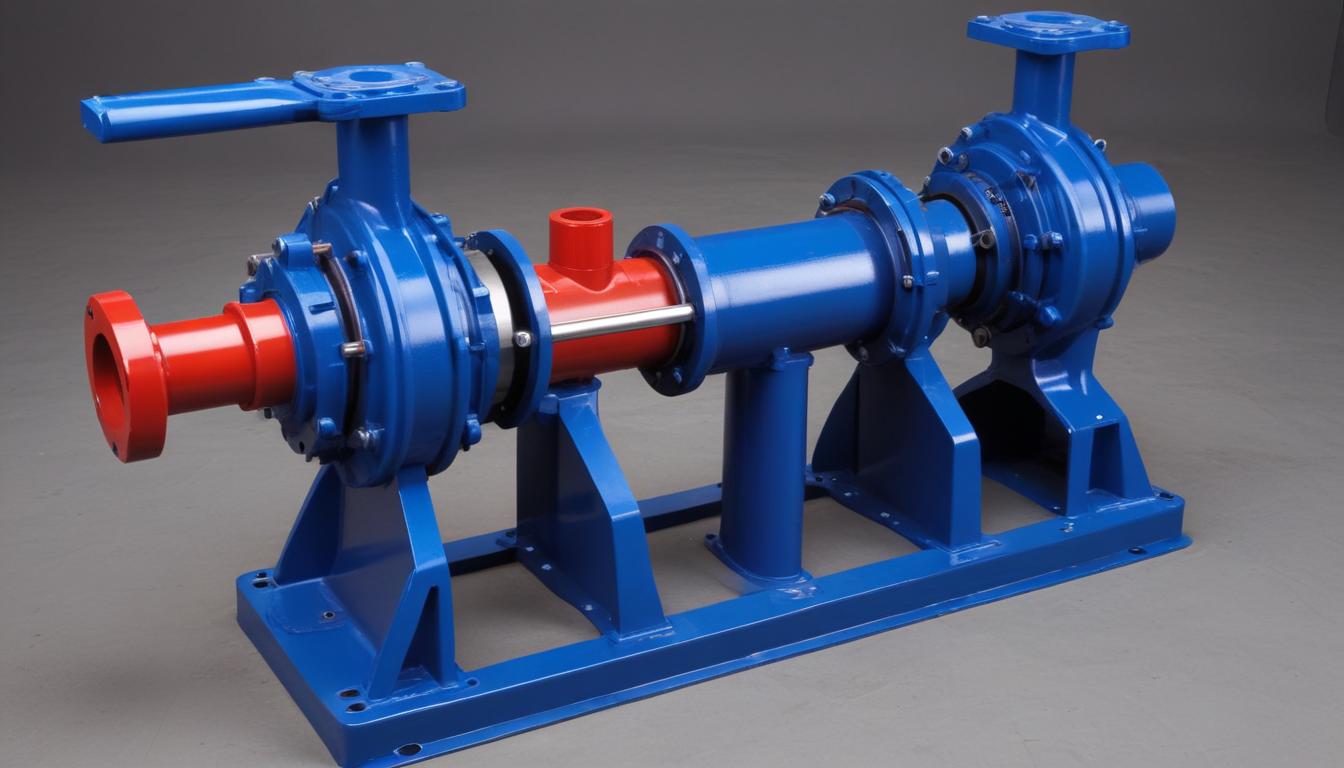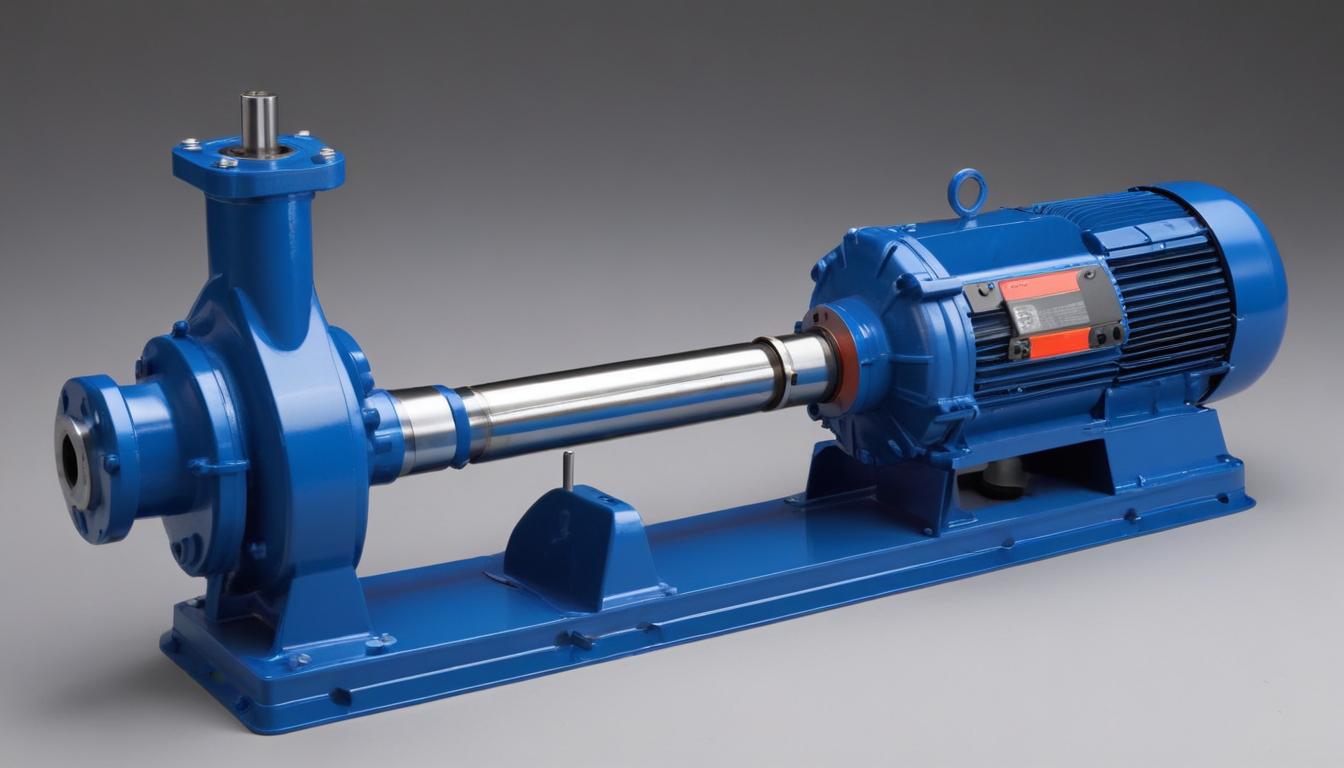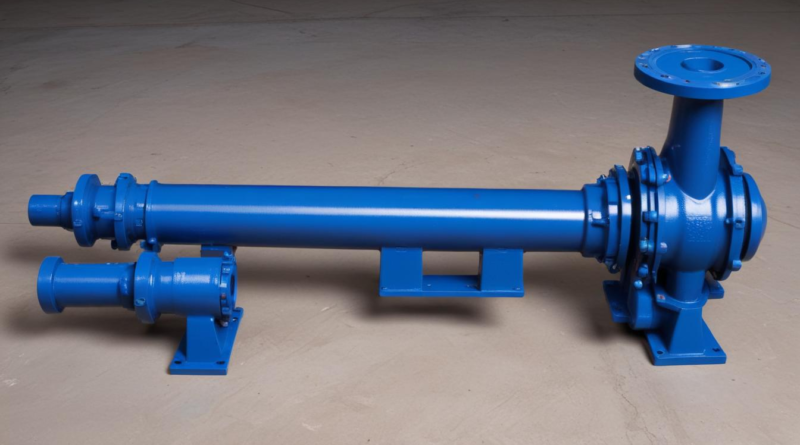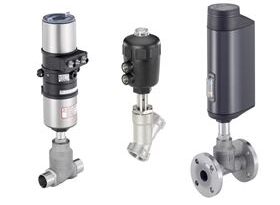How progressive cavity pumps work: a simple explanation
Progressive cavity pumps operate based on a unique design that enables the efficient transportation of viscous fluids. The functioning of these pumps relies on a helical rotor and a stator, which work in conjunction to create a series of cavities that transport the fluid through the pump. The rotor, which is typically made of metal or a specialized polymer, rotates within the stator that has a double-helix shape. This geometric configuration facilitates a continuous and smooth flow of liquid, minimizing turbulence and reducing the risk of shearing sensitive materials.
The key to the operation of progressive cavity pumps is the formation of cavities. As the rotor turns, the progressive cavities formed between the rotor and stator create suction on the inlet side, drawing the fluid into the pump. The rotation then pushes the fluid through the cavities towards the discharge side. This mechanism allows the pump to handle a wide range of fluid types, including those that are thick, abrasive, or contain solids.
To further understand how progressive cavity pumps function, consider the following essential components:
- Rotor: The rotating component that moves the fluid through the pump.
- Stator: The stationary part that provides the cavity for the rotor, typically lined with a soft material to minimize wear.
- Drive Shaft: Connects the motor to the rotor, providing the necessary power for operation.
- Sealing System: Ensures that the fluid does not leak from the pump, maintaining efficiency and safety.
Understanding the functioning of progressive cavity pumps is critical for engineers and users in various industries as these pumps offer a reliable solution for challenging pumping conditions. Their ability to produce a constant flowrate regardless of changes in pressure or viscosity is a significant advantage in applications where precision and consistency are paramount.
Components of a Progressive Cavity Pump
The components of progressive cavity pumps are intricately designed to facilitate the efficient functioning of the pump. Each component plays a vital role in ensuring that the pump operates smoothly and effectively under varying conditions. Below is an overview of the key components that comprise a typical progressive cavity pump:
- Rotor: The core component that rotates within the stator. It is usually constructed from high-strength materials like stainless steel or specialty alloys to withstand abrasion and corrosion. The rotor’s helical shape is crucial for creating the progressive cavities that transport the fluid.
- Stator: This is the stationary element that encases the rotor. The stator is often made from a softer material, such as elastomer, which helps to create a tight seal against the rotor. This seal is essential for maintaining pressure and ensuring that the fluid flows smoothly through the cavities.
- Drive Shaft: The drive shaft connects the motor to the rotor, transmitting rotational energy necessary for operation. It is designed to handle high torque levels and is typically supported by bearings that reduce friction and wear.
- Sealing System: The sealing mechanism prevents leakage of the pumped fluid, which is critical for maintaining efficiency and safety. Modern designs incorporate various seal types, including lip seals and O-rings, to withstand challenging operating conditions.
- Bearings: These components support the rotor and allow for smooth rotation, thereby reducing wear on both the rotor and stator. The choice of bearing materials is essential, especially in abrasive applications.
- Pump Housing: This is the outer casing that provides structural integrity to the pump. made from robust materials to endure both the operating environment and potential impacts.
Each of these components is engineered to work in harmony, which contributes to the overall reliability and effectiveness of progressive cavity pumps. Understanding the specific functions of these components is beneficial for engineers and pump users as it aids in troubleshooting, maintenance, and selection of the appropriate pump for specific applications. The design allows progressive cavity pumps to handle a diverse range of fluids while delivering a constant flow rate, making them invaluable in various sectors, from wastewater management to food processing.
Operating Principle of Progressive Cavity Pumps

The operating principle of progressive cavity pumps is centered around their unique design that effectively manages the flow of fluids, especially those that are viscous or contain solid particles. At the heart of this mechanism lies the relationship between the helical rotor and the stator, which form a continuous series of cavities. As the rotor turns, its helical shape creates a displacement of fluid that moves through these cavities from the inlet to the outlet. This method of fluid transportation is distinct from other pump types, as it does not rely on centrifugal force, allowing it to maintain consistent flow rates even with varying viscosity levels.
When the rotor rotates within the stator, it generates a suction effect that draws fluid into the pump. This suction is vital for the operation, particularly in applications where the pump may be handling thick, non-Newtonian fluids or slurries. The design ensures that the fluid fills the cavities created by the rotor and stator, minimizing turbulence and shearing. As the rotor continues to turn, it pushes the trapped fluid along the cavities towards the discharge side of the pump, ensuring a smooth and efficient flow.
To further elucidate the operating principle, consider the following points:
- Positive Displacement: Progressive cavity pumps operate on the principle of positive displacement, meaning they move a fixed volume of fluid with each rotation, resulting in a steady flow rate regardless of downstream pressure variations.
- Minimal Pulsation: This pump type is designed to offer low pulsation of flow, which is crucial in applications requiring precise dosing or consistent pressure.
- Versatility in Handling Fluids: Progressive cavity pumps can efficiently handle a variety of fluid types, including those with high viscosity, solids content, and abrasive characteristics, expanding their usability across several industries.
- Self-Priming Ability: Many progressive cavity pumps can self-prime, allowing them to operate without the need for external assistance to remove air or gas, thus improving operational reliability.
The efficiency of progressive cavity pumps comes from their ability to maintain a consistent fluid flow and minimize the risks associated with cavitation and shear stress in sensitive materials. This operational principle makes them ideal for applications in sectors such as wastewater treatment, food processing, and chemical handling, where precise fluid movement is essential. Engineers must consider these principles when designing systems that incorporate progressive cavity pumps, ensuring they meet the operational requirements of various processes.
Applications of Progressive Cavity Pumps
Progressive cavity pumps are widely utilized across various industries due to their versatility and reliability in handling challenging pumping situations. Their unique design makes them suitable for a range of applications, with capabilities that cater to specific fluid characteristics and process requirements.
- Wastewater Treatment: In this sector, progressive cavity pumps are employed for transporting sludge and other viscous fluids, ensuring efficient handling of waste material. The pump’s ability to manage solid content effectively makes it ideal for this application.
- Food Processing: The food industry frequently utilizes progressive cavity pumps to transfer pastes, creams, and other viscous products. Their sanitary design and gentle pumping action help maintain the integrity of food products while preventing damage during transfer.
- Chemical Processing: These pumps are adept at handling aggressive chemicals and viscous fluids, which require careful management to prevent degradation of materials. Progressive cavity pumps can transport corrosive chemicals with minimal risk of leakage, thanks to their effective sealing systems.
- Oil and Gas Industry: In oil extraction and refined product handling, progressive cavity pumps are used to move heavy crude oil and various emulsions that require careful pumping due to their viscosity. They are designed to cope with the varying properties of these fluids, ensuring consistent flow rates.
- Pharmaceuticals: The precise and gentle handling of fluid materials is crucial in the pharmaceutical industry. Progressive cavity pumps provide a reliable choice for transferring ingredients and finished products without compromising quality.
In addition to these applications, progressive cavity pumps are also utilized in areas such as biotechnology, mining, and construction. Their ability to deliver a constant flowrate while accommodating variations in fluid viscosity makes them indispensable in diverse settings. Moreover, the design allows for easy maintenance and adaptability, affirming their effectiveness in demanding operational conditions.
By considering the specific requirements of each application, engineers can optimize the selection and use of progressive cavity pumps to enhance overall performance and operational efficiency. Understanding these applications helps in tailoring solutions that not only meet but exceed the demands of various pumping processes.
Advantages and Limitations of Progressive Cavity Pumps

Progressive cavity pumps offer several advantages that make them a preferred choice in various industrial applications, although they also present certain limitations that users should be aware of. Understanding these pros and cons is essential for engineers and pump users when selecting the right equipment for their specific needs.
Advantages:
- Constant Flow Rate: One of the most significant benefits of progressive cavity pumps is their ability to deliver a constant flowrate regardless of changes in pressure or viscosity. This feature is crucial in applications requiring precise dosing and metering.
- Versatility: These pumps can handle a wide range of fluids, including those that are thick, abrasive, or contain solids. Their design enables them to operate effectively with substances such as slurries, emulsions, and non-Newtonian fluids.
- Self-Priming Capability: Progressive cavity pumps can easily self-prime, which means they can start pumping without requiring additional suction or manual intervention to remove air. This ensures operational reliability and ease of use.
- Minimal Shear: The gentle pumping action reduces the risk of shearing sensitive materials, making them ideal for applications in food processing and pharmaceuticals. This preserves the integrity of the fluid being pumped.
- Low Maintenance: The design of progressive cavity pumps often results in less wear and tear on components, which can lead to lower maintenance costs and longer operational lifespans.
Limitations:
- Initial Cost: The initial investment for progressive cavity pumps can be higher compared to other pump types due to their specialized design and manufacturing processes. However, this cost can be offset by their durability and low maintenance needs.
- Temperature Sensitivity: These pumps may be sensitive to extreme temperature variations, which can affect the materials in the stator or rotor and lead to premature wear or failure if not correctly specified for the application.
- Potential for Slippage: In some cases, especially with highly viscous fluids, there might be potential slippage between the rotor and stator. This can lead to reduced efficiency and lower performance output under certain conditions.
- Size Constraints: Progressive cavity pumps can be larger and heavier than other types of pumps, which may pose challenges in installations with limited space or specific weight requirements.
- Need for Quality Seals: High-quality seals are essential for preventing leakage; however, the seals can wear over time, necessitating periodic replacement and maintenance to maintain pump performance.
While progressive cavity pumps offer numerous advantages including their unique ability to handle challenging fluids and deliver a consistent flow, it is also crucial to consider their limitations such as initial costs and sensitivity to external conditions. Engineers and pump users must carefully evaluate their specific application requirements and select the right pump to ensure operational efficiency and reliability in their processes.



